Welcome to O’Mara Acres, the NEW home of Our Frugal Florida Homestead!
It’s been quite a journey moving from the suburbs of Orlando to a rural homestead outside the city. I’ll soon have for you numerous blog posts about the move, starting a homestead from scratch, designing and growing a food forest, and so much more!
Today’s post is all about September’s garden here at O’Mara Acres: what we found on the property when we moved here, what we started growing, and what we’ve already started harvesting.
You can click the links below for shortcuts to each section:
- What I Found on the Property
- What I Started Growing
- What I Harvested
- Resources
- What’s Next
- What Do You Think?
What I Found on the Property
Exploring a brand-new property is so exciting! The first few times I walked our property, I was thrilled to find trees, wildflowers, edibles, and an abundance of wildlife.
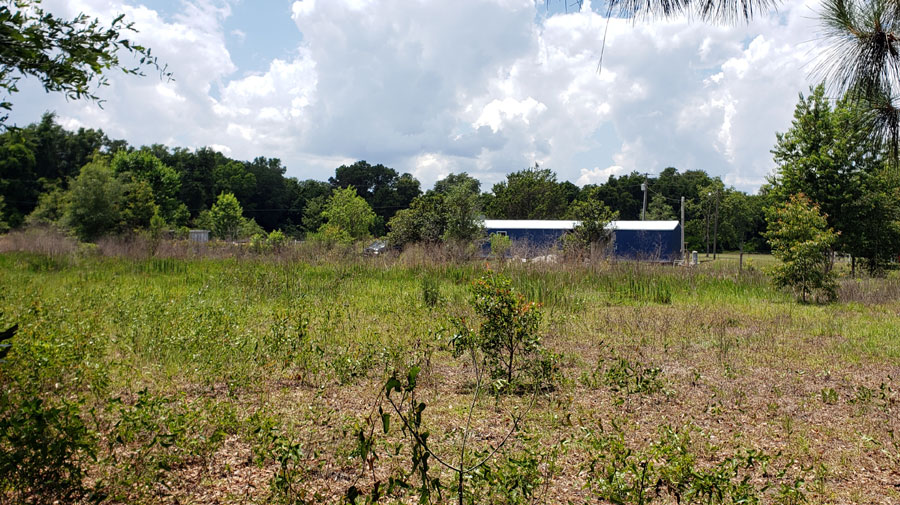
Our 3.3 acres of land had been left vacant for at least fifteen years. It was originally pasture land and was gradually growing back into woodlands.
I found many wildflowers growing, most of which were new to me. Here are some of the beauties I found on the wild pasture:
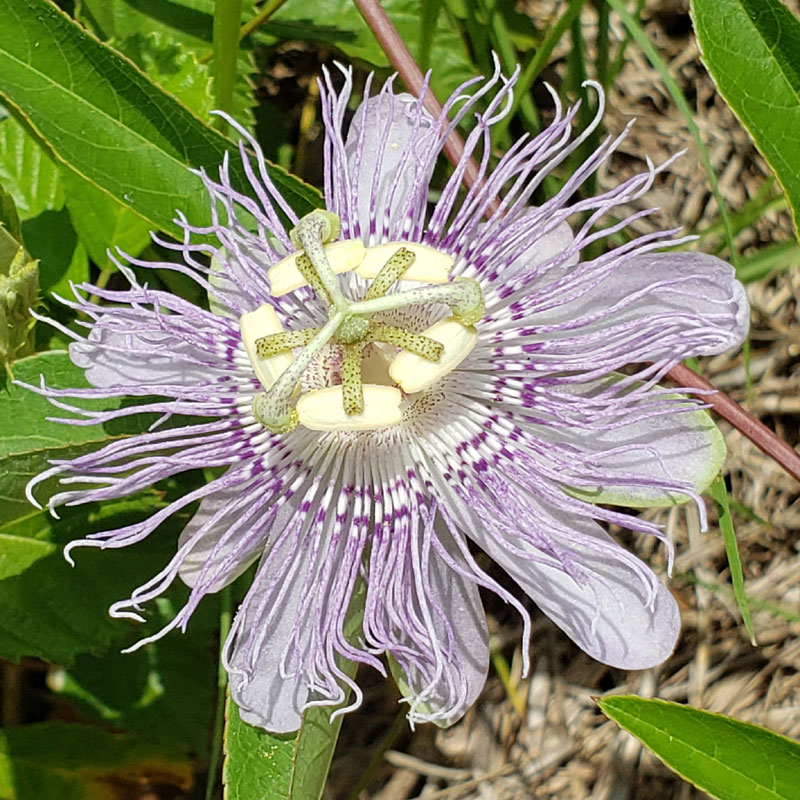
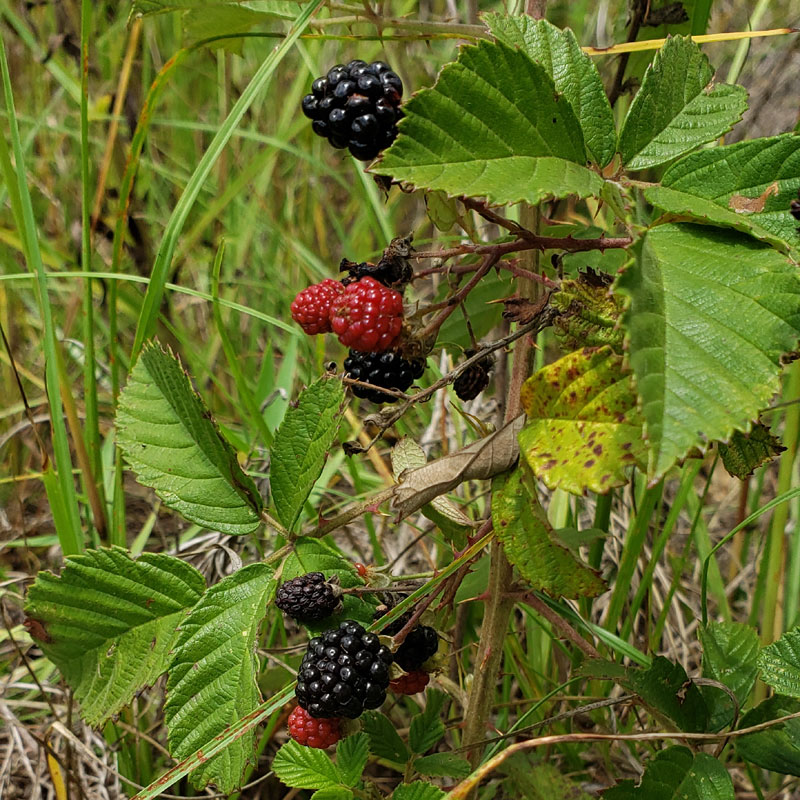

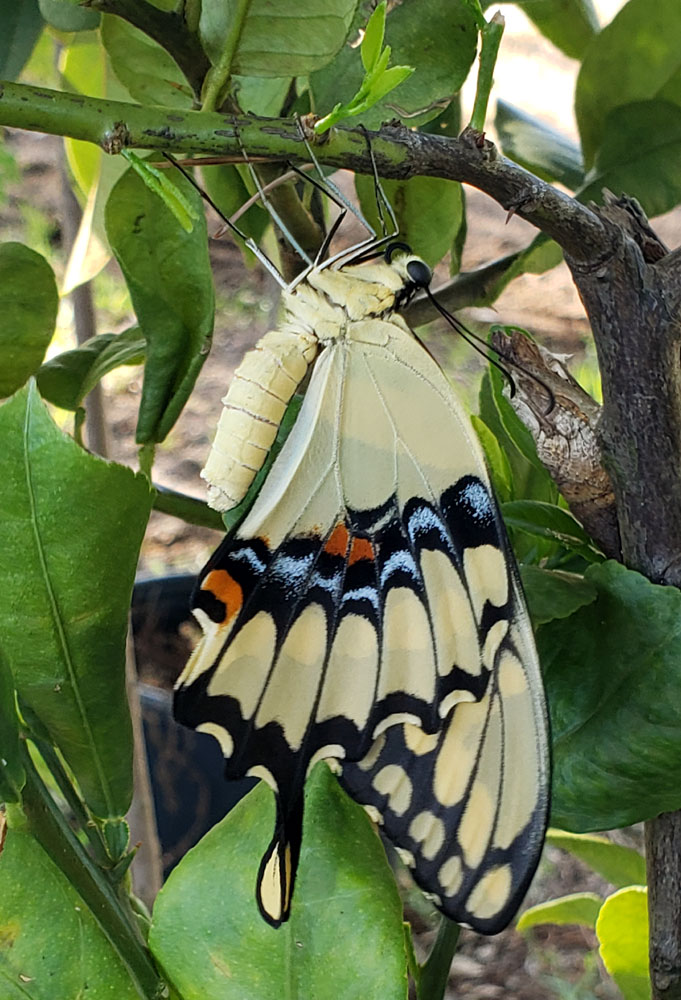
Oak trees and wild cherry trees were sprouting up all over the property. There was a mess of blackberry briars (Tasty little treats!), an annoying ivy called greenbrier, and pines and oaks along the fencerow.
Two of my favorite finds were beautyberry bushes and wild passionfruit known as “maypops” here in the Southeast US.
All of the wildflowers attracted an abundance of wildlife. There were plenty of birds, bees, dragonflies, spiders, and butterflies.
I saw signs of deer, armadillos, and racoons. We saw foxes and a few squirrels. At dawn and dusk we could hear frogs and crickets. All summer long there were cicadas in the trees humming too.
Our new property was alive and thriving!
What I Started Growing
For months before the move, I had been designing our gardens and food forest. Now, it was finally time to put my plans into action. All of my plants and trees that I had brought from our home in Orlando were now sitting in pots under the huge oak tree in the front yard. The shade from the oak protected the plants from the harsh summer sun and heat.
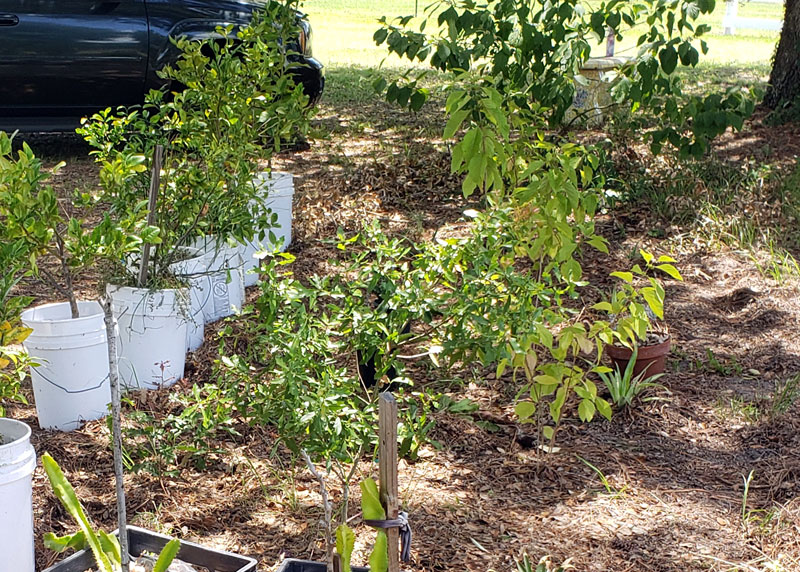
In July and August while we were waiting for our house to be finished, Mike and I would go out to our property on the weekends and some evenings after work to plant, build, and develop the property. It was during those months that we began planting the citrus and avocado trees, the sweet potatoes, building the dragon fruit trellis, and starting raised garden beds.
By September, we had most of the citrus planted, and one raised bed started. The garden shed was placed in the middle of the food forest. We had already begun mowing areas for pasture and chipped wood for mulching.
I finished off the dragon fruit trellises by layering topsoil, cardboard, and wood chips around them. Then I planted Seminole pumpkins under both trellises. Within a week the pumpkins were up and growing.
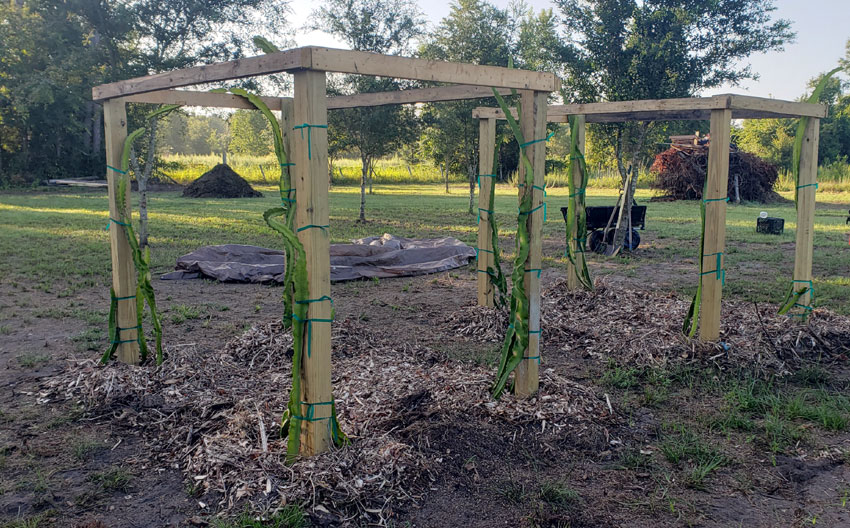
Another large project was creating a papaya circle. I planted 7 papayas in a large circle surrounded by 8 of my lemon trees in a larger exterior circle.
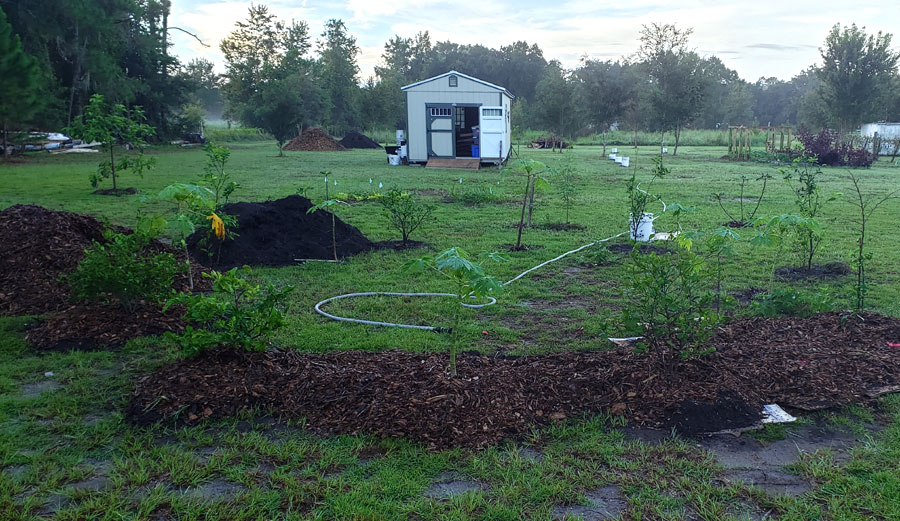
This is the method I used to plant all of my trees.:
I dug a hole slightly larger than the pot that the trees were in and replaced some of the sandy soil with a more nutrient-rich topsoil from another part of the property. Then I sprinkled in a small amount of slow-release citrus plant food, planted the tree, then watered well. Next, I spread a thin layer of topsoil around the tree, put one layer of cardboard down around the tree and watered well. Finally, I put 4-5 inches of wood chips around the tree overtop the cardboard. The cardboard and wood chips helped keep the grass from growing back, plus added nutrients to the soil as they slowly decayed.
Eventually, after several sessions, I was able to complete the papaya circle. The wild maypops had been growing abundantly in that area. I left many of them there to add a vining layer to the food forest I’m developing.
Throughout the food forest I planted over 30 pigeon peas. These fast-growing plants are going to be one of my chop-and-drop organic nitrogen suppliers. I also planted seven moringa trees to use as another source of chop-and-drop fertilizer, plus use as a highly nutritious edible green.
What I Harvested
Over the summer, I harvested enough maypops to save in the freezer to make a small batch of jelly later this fall. They’re not as sweet or juicy as the cultivated varieties of passionfruit, but have a unique fruity flavor of their own. I’ve left them growing on a portion of the east fencerow as well as in the food forest. They are very hardy plants. I’ve learned the most difficult part of growing them is keeping the deer and other wildlife from eating them before me! 😊
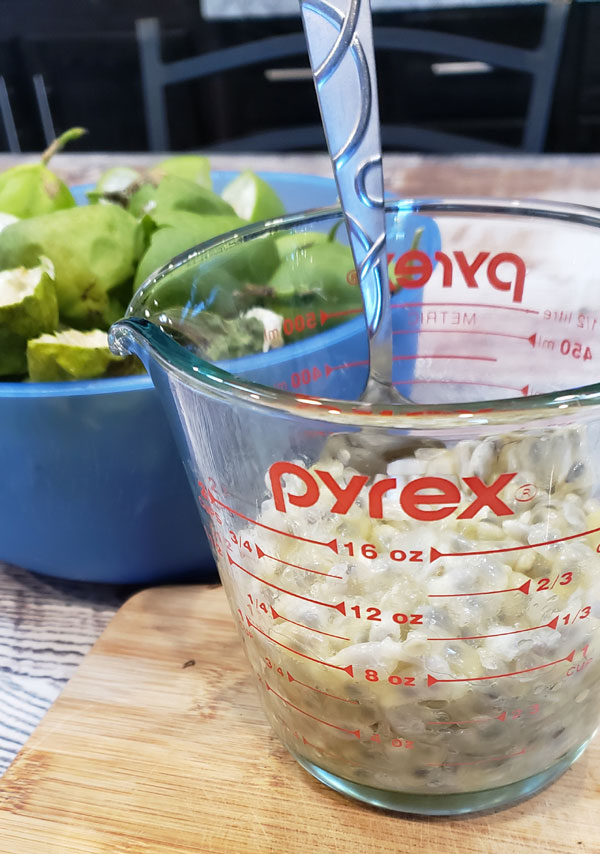
There were so many beautyberry bushes, I was able to easily pick enough to can up a batch of jelly. I tried another new recipe, but like last year, my beautyberry jelly didn’t thicken, so I ended up with beautyberry syrup. However, my husband prefers beautyberry syrup to maple syrup on his pancakes, so it’s still a win for me!
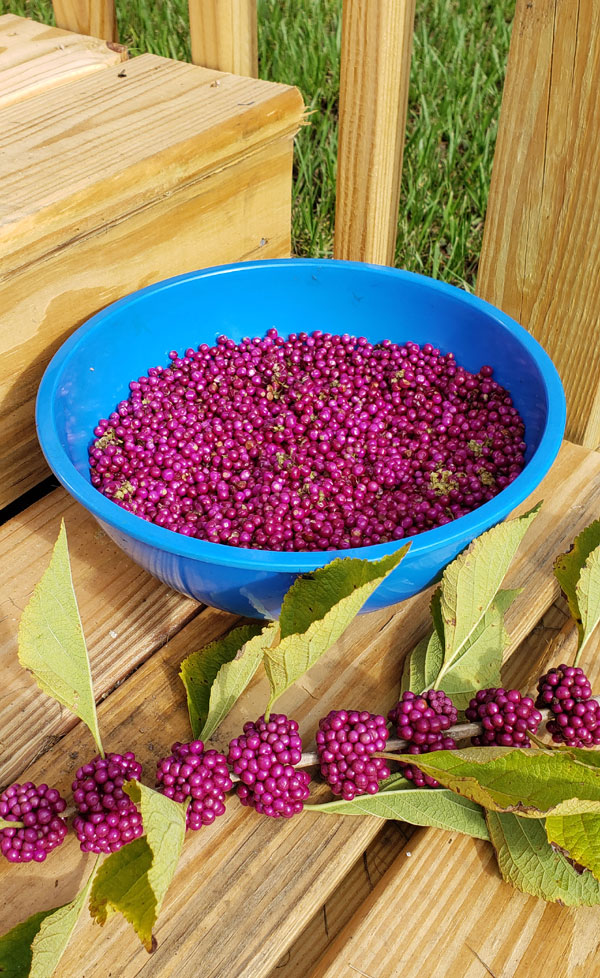
The longevity spinach and Okinawa spinach I had planted back in July made it through the summer heat. I would occasionally snack on them while I was working out in the garden. I like to take a leaf and roll it up with a small basil leaf. It’s a flavorful snack!
The cranberry hibiscus I had transplanted grew fast in the summer heat. I dried several batches of its leaves to make tea this winter. It grew so fast though, that the main branches broke under their own weight. I used those broken branches as another source of chop-and-drop nutrients for the food forest.
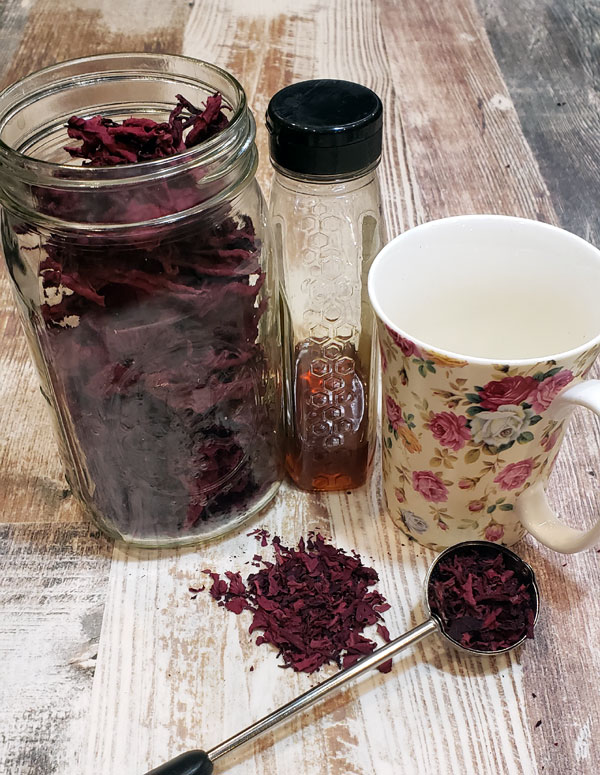
Now that we are living on the property, I’ll have time to keep the hibiscus trimmed to a manageable size. I’ve also planted several propagated cuttings of cranberry hibiscus into a flower bed in the northeast corner of the front yard where they can get a lot of sun.
Even in the short time I’ve been on the property, it had already produced an abundance of food for us. The land is fertile and alive, and I have not lost one plant or tree yet.
Resources
- Seasonal Infographics for Gardening in Florida (UF|IFAS)
- More about Maypops
- What are pigeon peas?
- Printable garden guides and seed packets in my Etsy Shop
- Follow me on Instagram for my most recent gardening adventures!
What’s Next
Looking ahead to October, plans are in the works for more raised garden beds, continued tree planting, and seed starting.
As we continue the work on developing our whole property my actual time spent gardening will be limited, but I am a notorious note-taker, so I’ll have plenty to share about October gardening and growing my food forest.
I’ll also be shopping for apple and peach trees that are “Florida-friendly” with low chill hours. I’m also preparing an area for a blueberry patch.
What do You Think?
Which phrase do you prefer to use when growing a garden in and around fruit trees? There are many popular phrases and definitions of this type of food production currently in use. Leave me a note in the comments section, thanks!
- Forest Garden
- Food Forest
- Agroforestry
- Backyard Permaculture
- Permaculture Garden
- Edible Forest Garden
- Other?
I’ll let you know in October’s Garden Journal what my preferred phrasing is for growing edibles among the fruit trees.
Until next month, happy gardening!
Alisa